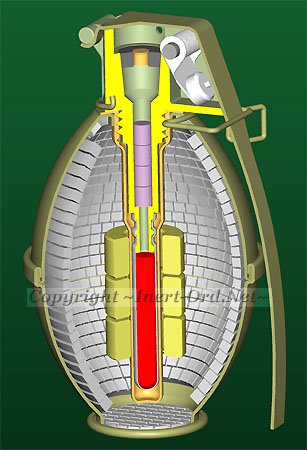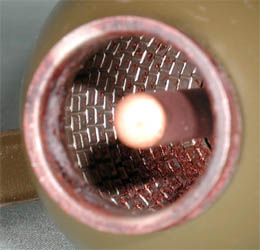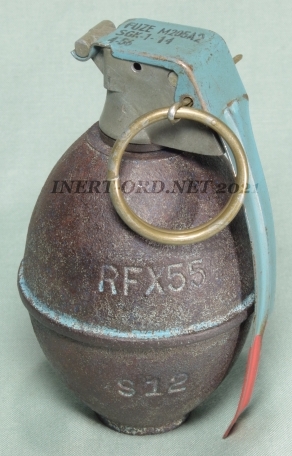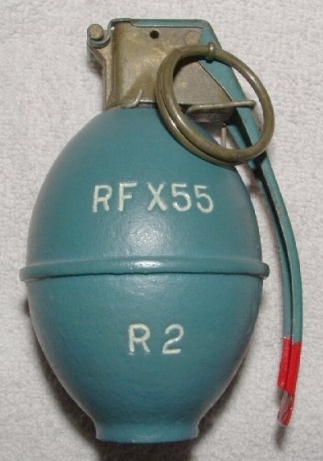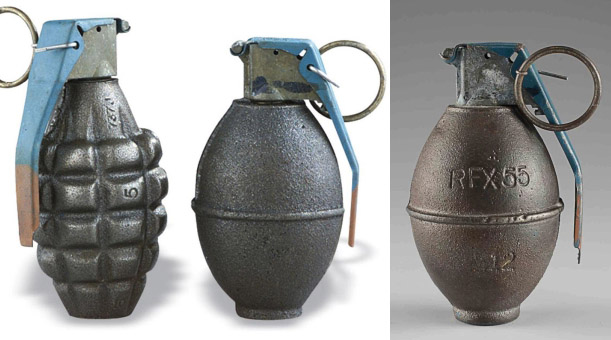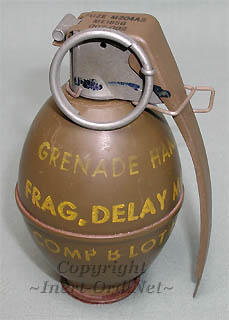
After WWII, efforts were under way to improve upon the cast iron Mk.II design.
The problem with a grenade that produces limited heavy fragments is consistency of coverage. Many times, even close to the point of detonation, the schrapnel coverage could be spotty.
On the other hand, the heavy fragments can have lethal effect far beyond the intended target area. Experience showed that hand grenades needed to be more effective close in, and long range hazards needed to be minimized.
Towards that end, a new class of grenade was developed. A high yield limited range fragmentation grenade.
The first of this type was the M26, developed prior to the Korean War. The M61 is an improved version of that. It has a light sheet metal body, with an internal fragmentation coil, producing a more uniform and effective casualty radius (15 meters).
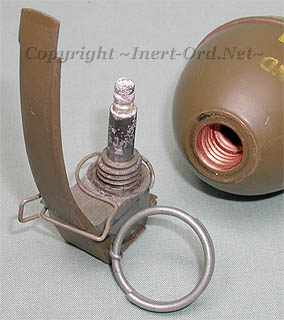
The M61 incorporates a secondary safety feature called the "Jungle Clip".
While never a design intent, grenade safety levers have long been used as a convenient carry hook, clipped over web gear. Experience in Vietnam showed that jungle growth had an unfortunate tendency to snag hand grenade safety pins. The jungle clip is a secondary back-up safety device, used to clamp the lever to the grenade in the event that the pin is accidentally pulled.
Shown here is the first model. A simple add-on wire part. When unhooked it remains attached to the grenade.
The grenade now required two separate arming actions, releasing the jungle clip and pulling the pin, prior to throwing the grenade.
